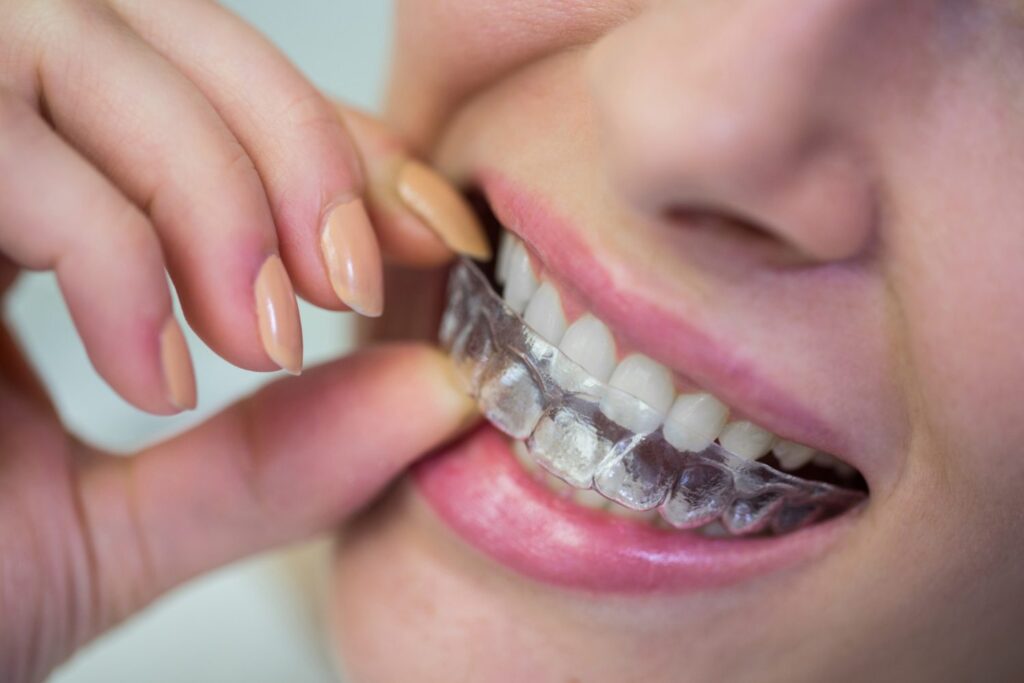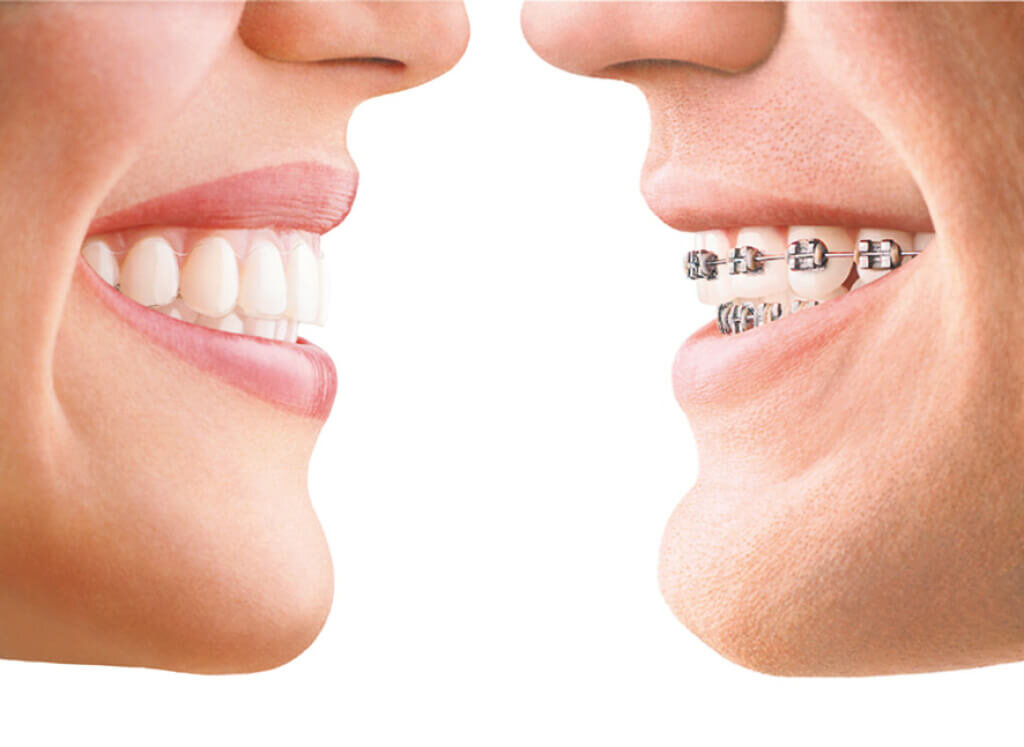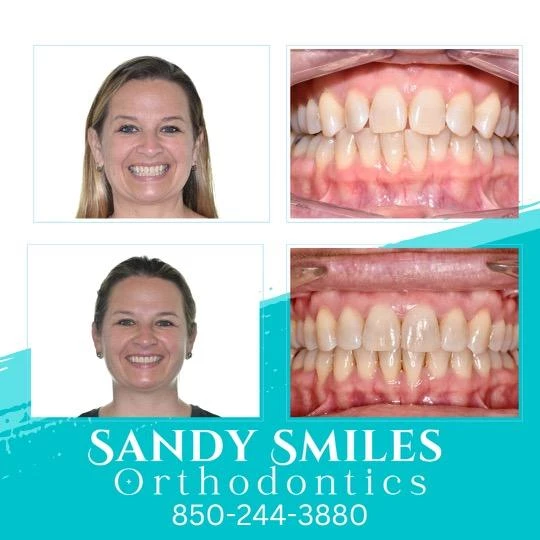Frequently Asked Questions Concerning Invisalign: Everything You Required to Know
Frequently Asked Questions Concerning Invisalign: Everything You Required to Know
Blog Article
Invisalign vs. Standard Dental braces: Which Alternative Is Right for You?
When taking into consideration orthodontic treatment, the selection in between Invisalign and typical braces provides a number of crucial factors that warrant mindful assessment. Invisalign offers a discreet alternative with removable aligners, while standard dental braces offer a more noticeable yet reliable remedy for extreme misalignment.
Review of Treatment Choices

In comparison, conventional dental braces consist of metal brackets and wires that are adhered to the teeth. This technique uses constant pressure in time to accomplish placement. While efficient for complex orthodontic issues, conventional dental braces require normal sees for changes and can position obstacles in maintaining dental hygiene as a result of the trouble of cleaning about brackets and wires.
Both options have their merits, and the option typically hinges on certain dental problems, way of life preferences, and client compliance. Eventually, speaking with an orthodontic expert is critical for determining the most appropriate therapy plan customized to specific requirements. Understanding the nuances of each option can dramatically influence the total success of orthodontic therapy.
Visual Considerations
A significant aspect influencing the option in between Invisalign and conventional braces is the aesthetic charm each treatment uses. Invisalign aligners are crafted from clear plastic, making them essentially unseen when worn. This very discreet look is particularly attracting teenagers and adults that may really feel uneasy concerning their orthodontic therapy. The capacity to keep a natural smile throughout the placement procedure can considerably improve the person's confidence in expert and social setups.
On the other hand, traditional braces include metal braces and wires, which can be much more noticeable. While innovations in orthodontic modern technology have caused the development of smaller brackets and tinted elastics, standard braces still keep a more conspicuous account. For some individuals, the exposure of braces may prevent them from looking for required therapy.
Eventually, the option between Invisalign and standard dental braces may rest on personal choices pertaining to aesthetics. Clients that prioritize discernment commonly lean toward Invisalign, while those who are less worried regarding presence might go with typical dental braces. Recognizing the aesthetic implications of each alternative is essential for making an educated choice that lines up with one's way of life and preferences.
Comfort and Convenience

In regards to ease, Invisalign aligners are removable, allowing patients to appreciate their favored foods without limitation and preserve ideal dental hygiene. Cleaning and flossing are streamlined, as the aligners can be secured during these routines, whereas traditional braces require official source careful maneuvering around cords and braces.
In contrast, standard braces demand regular adjustments, making them less practical for those with busy timetables. Generally, the comfort and comfort of Invisalign make it an enticing selection for lots of people seeking orthodontic therapy.
Therapy Period and Performance
While both Invisalign and traditional dental braces are effective in remedying oral misalignments, the period of treatment can differ substantially in between both alternatives. Generally, Invisalign treatment can take anywhere from 12 to 18 months, depending upon the complexity of the situation. The clear aligners function by slowly moving teeth right into their wanted settings, and regular follow-ups with an orthodontist assistance guarantee development continues to be on the right track.
On the other hand, standard braces often require a longer dedication, typically ranging from 18 months to 3 years. This is because of their fixed nature and the usage of cables and braces, which can be much more reliable for extreme misalignments and complicated instances (Invisalign). The therapy effectiveness of standard dental braces is well-documented, as they allow for accurate modifications and greater control over tooth motion
Eventually, the option between Invisalign and typical dental braces might depend upon both the anticipated therapy duration and the details dental issues available. Consulting with an orthodontist is critical, as they can provide tailored recommendations based upon private requirements, ensuring the picked approach straightens with desired durations and outcomes.
Price Contrast and Insurance Policy Options
Cost plays a considerable function in the decision-making procedure for individuals taking into consideration orthodontic treatment, whether going with Invisalign or standard dental braces. Usually, the price of Invisalign ranges go to this web-site from $3,000 to $8,000, while standard dental braces normally set you back between $2,000 and $6,000. Elements affecting these prices consist of the complexity of the case, the duration of treatment, and geographical location.
Insurance protection can considerably you can try here impact out-of-pocket expenditures. Many dental insurance strategies give partial coverage for orthodontic treatments, but the specifics can differ commonly. It is crucial for people to evaluate their insurance coverage to identify the degree of insurance coverage for either choice. Generally, typical dental braces might be a lot more often covered by insurance coverage plans compared to Invisalign, which some insurance firms classify as a cosmetic procedure.
Additionally, several orthodontic practices supply adaptable settlement plans, making both treatment choices extra obtainable. Patients should ask about potential financing options and discount rates for in advance repayments. Examining the complete cost, including insurance coverage benefits and layaway plan, is vital for making a notified choice that straightens with both aesthetic choices and budget considerations.

Verdict
In recap, the option between Invisalign and typical dental braces hinges on several aspects, including visual preferences, comfort, therapy period, and expense. Invisalign supplies a discreet, detachable choice that promotes dental hygiene and nutritional flexibility, while typical dental braces may be extra appropriate for complicated dental concerns and typically come at a lower price point. Inevitably, assessment with an orthodontist is necessary to evaluate specific scenarios and determine the most appropriate therapy choice for achieving ideal oral alignment.
When taking into consideration orthodontic treatment, the selection between Invisalign and standard dental braces provides several vital factors that warrant mindful evaluation.Comparing Invisalign and traditional braces reveals distinctive therapy alternatives for orthodontic improvement.While both Invisalign and typical dental braces are efficient in dealing with oral imbalances, the duration of therapy can differ substantially between the two alternatives.Expense plays a considerable role in the decision-making procedure for individuals thinking about orthodontic treatment, whether opting for Invisalign or typical braces.In summary, the option between Invisalign and typical dental braces pivots on several variables, including aesthetic choices, comfort, therapy period, and cost.
Report this page